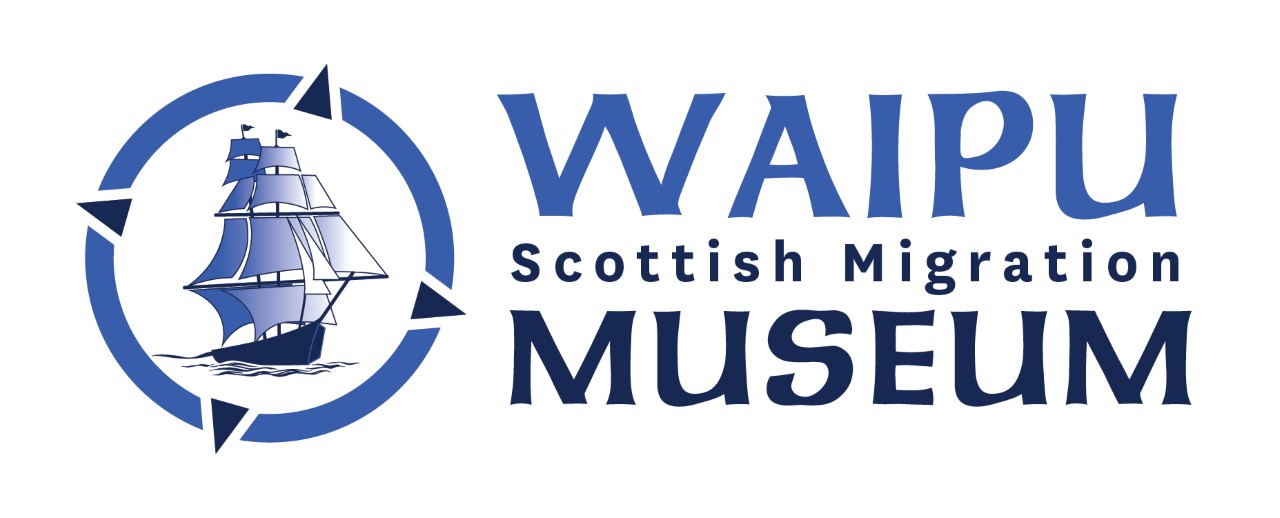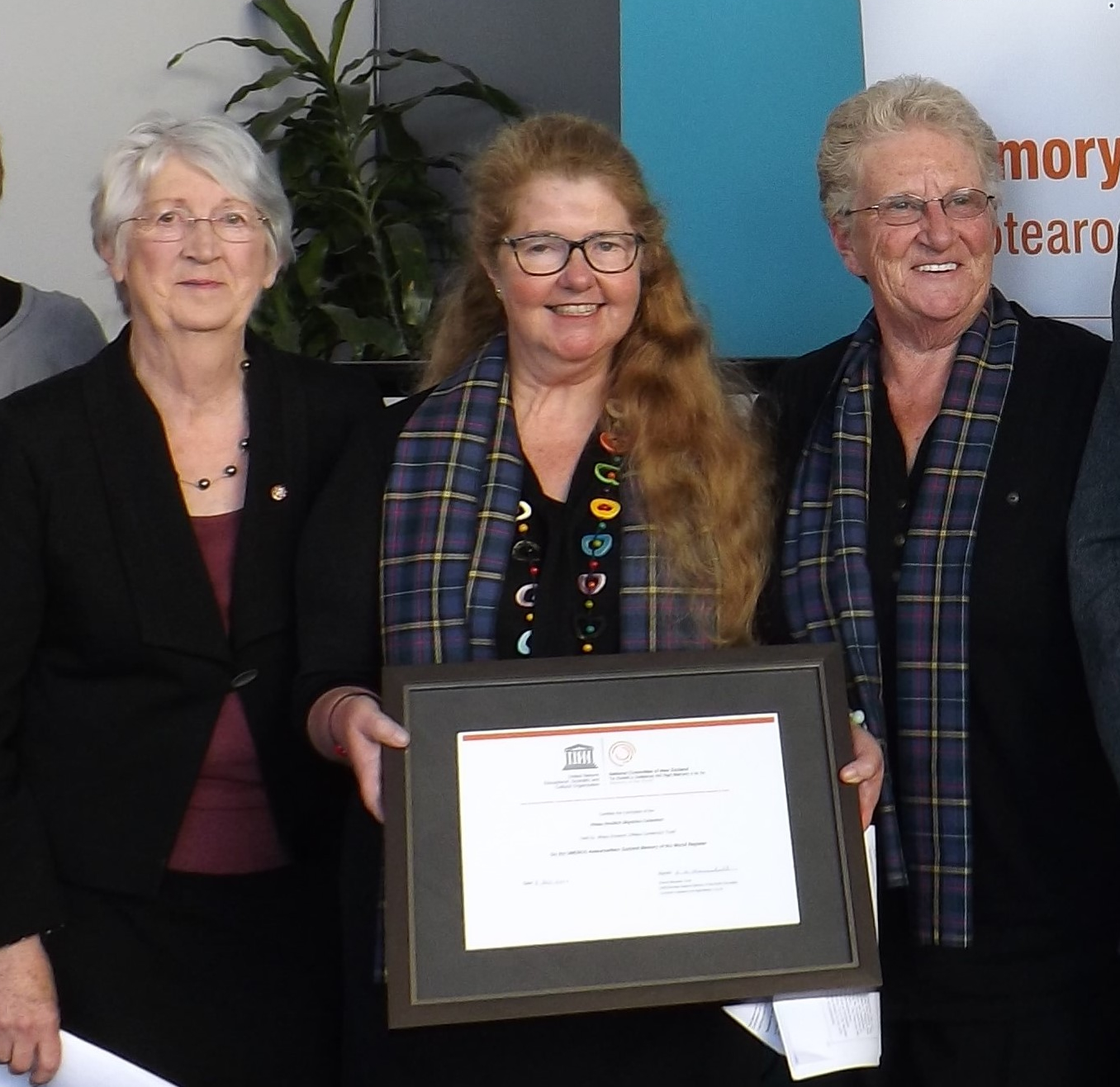DAME FIONA KIDMAN’S TRIBUTE
and announcement of theUNESCO New Zealand Memory of the World documentary heritage register inscription,
announced in Wellington on 8 November 2016
It’s just over 62 years since I first set foot in Waipu, a small Northland town, over the Brynderwyn Hills, lying to the south of Whangarei.
I was about to start high school in my new home and I’d gone to the Centre, as the farming township has always been known, in order to see the young Queen
Elizabeth drive through on her first visit to New Zealand. The car flashed past, we saw a gloved hand at a window, and it was over, like an illusion.
But there, in the middle of the Centre, stood a sturdy stone and very real building.It was called the House of Memories then, opened just a year earlier in 1953.
I was immediately drawn to it, a place I’d come to visit dozens of times over the years.
It was a museum housing photographs and documents relating to the great Nova Scotian migration to New Zealand that took place in the1850s, a repository of family histories and treasures.
A group of some one thousand Gaelic speaking people, representing 19 clans, had followed in the footsteps of the Reverend Norman McLeod, a powerful and charismatic Presbyterian leader who led his followers
from harsh poverty to new lands and hopeful futures. The collection was started by the descendants of the migration.
The migration actually began in Scotland, earlier in the 19 th century, during the time of the infamous Highland Clearances. McLeod led his people first from Scotland to Nova Scotia,
on Canada’s eastern seaboard, from there to Australia, and ultimately to settle in Waipu. The migrants built their own ships in their backyards in Nova Scotia.
The ships were the Margaret, the Spray, the Gertrude, the Breadalbane, the Ellen Lewis and the Highland Lass.
The ships were commemorated by a six-sided memorial that stands near the museum and is topped by a statue of the Lion of Scotland.
And believe me, these were lion-hearted people who braved many perils in their quests for better lives.
The community was proud, successful and built on good farming practice and, for a time, ship building. They formed strong alliances with local iwi Patuharaheke.
Waipu is a unique Scottish community, given that it was brought together under the ministry of McLeod, and preserved its cultural and community identity,
its songs and its storytelling, indeed, its Gaelic language was spoken widely until the 1920s. The House of Memories was renamed, in time, the Waipu Scottish Migration Museum,
and the little stone building has grown and was modernised and its as aesthetically pleasing as many international counterparts.
And, from its records evolved the International Online Legacy Genealogy Base of over 100,000 descendants of the migration, plus workers’ diaries and personal accounts, correspondence,
shipping records and much more. In the beginning, the work was all done by volunteers, and much of it still is. The documents and photographs have all been gifted to the Museum.
The collection tangibly documents and interprets an aspect of Scotland’s migration history, directly influenced by political and economic events.
One cannot over estimate the value of this heritage collection, not only to the tens of thousands of descendants of the migration, but to researchers in general.
Numerous writers and academics have benefited from the access provided by the collection. Writers of both non-fiction and fiction have drawn on these amazing stories of survival, resilience and skill.
I’m one of them. 30 years ago, I wrote a novel called The Book of Secrets, based on the migration. I took some fictional liberties,
which earned me some stern reproofs on occasion, but in the end, there seems to have been a consensus arrived at, that the story illuminated some aspects of recorded history, in particular that of the women.
The book has never been out of print: I’m grateful for the resources made available to me. I’m grateful too, for the warmth, the kindness and acceptance of this community.
Although my mother was a Scotswoman by descent, she was not a descendant of this migration – and my father was an Irishman – we might well have been labelled outsiders.
Instead my family and I were supported with an extraordinary generosity of spirit, a true neighbourliness, reflected in McLeod’s exhortation, drawn from the Commandments, to love they neighbour.
That spirit is alive and well in the community of Waipu. Waipu Scottish Migration Museum’s collection is the first outside of the main centres to receive an inscription to the UNESCO Aotearoa New Zealand Memory of the World register.
I congratulate all those who have worked so tirelessly for so long for so little reward except knowing the value of their contribution to their community to bring about this historic outcome.
It’s a huge achievement which will mean much to the town, to Fiona Mohr and her team at the Museum, and those who have gone before. They have done a magnificent job.
I’d now like to present, Fiona to Fiona, your inscription.

